Live from Italy Part 1 | Part 2 | Part 3 | Part 4 | Part 5 | Part 6
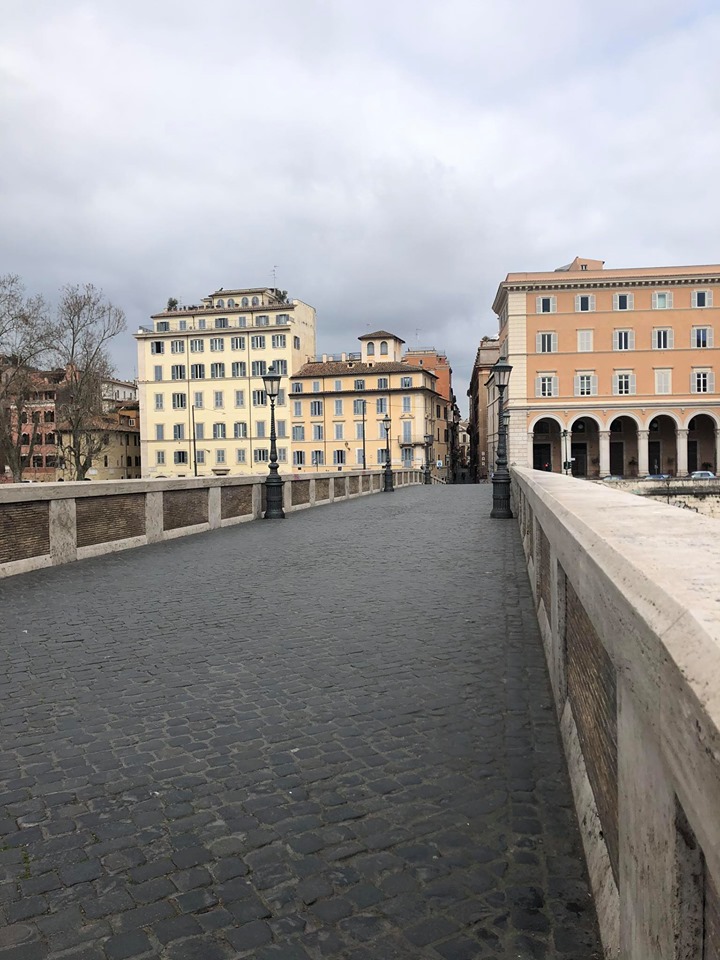
Last week at this time I was blissfully in London. It was March 6. I was already nine days into a visit to my daughter that was meant to be six days. I’d anticipated my departure by two days because it was already looking as though flights out of Italy – Milan at that point – were suspicious. One had been blocked in Mauritania. A hotel was locked down in the Canary Islands due to an infected doctor from Milan. My project at the UN was coming to a close and I had a month of little trips around Europe planned, starting with a visit to Giulia in London. There was no way I was going to let myself be grounded. So I paid the change fee to Vueling, our favorite little budget airline, and left two days earlier than planned.
It was odd being in London where everything was normal. No one wore masks; museums, pubs, cinemas, theaters, buses, stadiums, everything was packed! I commented frequently on the differences but relished in them, as well. We carried hand sanitizer with us everywhere; we and all the other Italians who had done what I did, looked around us, seemingly nonplussed but being ultra-careful nonetheless.
Saturday, February 29, saw us in the middle of Piccadilly Circus where we elbowed our way through crowds. We thought we’d take in a film only to find each one we were interested in was sold out. We bumped around the square a bit and my daughter was visibly (and audibly) annoyed. “We hate crowds and there’s coronavirus going around and we’re in the worst possible place on a Saturday night. How did this happen?” I spotted Tom Stoppard’s new play, “Leopoldstadt,” across the way at the Wyndham. People were just beginning to line up. It was sold out. We bought standing room at £15.00. We stood in the back of a sold-out theater for two and a half hours. Now that I think about it, we were likely in the safest spot of a decidedly unsafe place to be at the time.
Back home in Rome, I’d been receiving texts from theater producers and actor friends that everything was being shut down. A friend who spent the better part of 15 years building up a philanthropic theater and arts festival which finally had a solid following stands by as her host venue faces closure and her hard-earned momentum dissipates by the hour. Pre-February 26, I’d been to one crisis management meeting at the school where I sit on the board discussing potential online learning plans. At the time it seemed like science fiction, but best be prepared. Less than a week later, all students were remanded to their homes, all instructors teaching online.
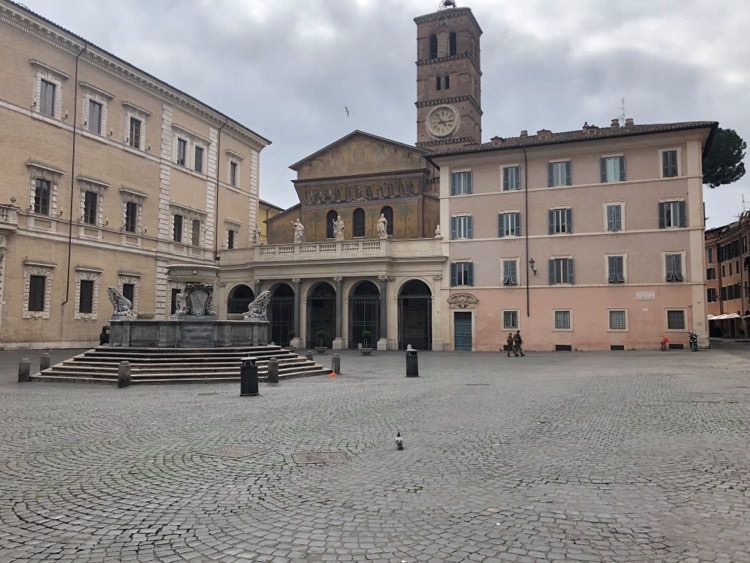
NOT TO COME BACK
As I went about my business in London unfettered – dinner with friends, pub nights, game nights – each night I read messages from Rome telling a more and more dire story. I’d moved my departure already by four days so that I could see a friend visiting from Cairo, but anxieties rose. Now friends were advising me not to come back.
“Rome is deserted.” “There’s nothing open.” “No one’s going out.” I was watching the incredibly sound and well-delivered press conferences Prime Minister Conte was giving each night. Doctor friends were keeping us abreast of their daily and nightly slog.
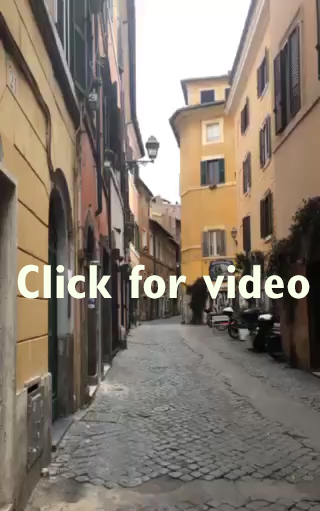
The usually very crowded via del Moro in Trastevere-click image for video.
On Sunday night I packed my bag, unsure still if I’d board that plane in the morning. I wanted to be home. A six-day trip had turned into a 12-day one. I felt like I had to be home. Rome was calling. It has been my home for 20 years, Italy for over 30. I am proud of how this country, so often criticized for what can often come across as chaos and shallowness, steps up in a crisis. Monday, as I approached the gate at Gatwick, I realized I was the last passenger – and they had only just called boarding. Flight agents crowded around the desk and chatted. They all looked up at me. It was as if they’d laid bets on whether or not I’d bolt. “Am I the last one?” The flight agent said I was. “Am I the only one?” There have been many cancelations, they replied. I hesitated. One of them smiled at me and said, “Go on, you’ll be fine.” I boarded, one of maybe 15 people on the plane.
I closed my eyes, put my earbuds in and woke up in Rome. It took me 12 minutes, literally, to get from plane to taxi. There were Red Cross workers kitted up as we entered the terminal. I was the only person with an extra-EU passport. I nearly walked right through, but a police agent saw me and called me back for my stamp. “Not much to do here, I gather,” I said. “Oh, it’ll all be alright. People will come back. You did the right thing to come back.”
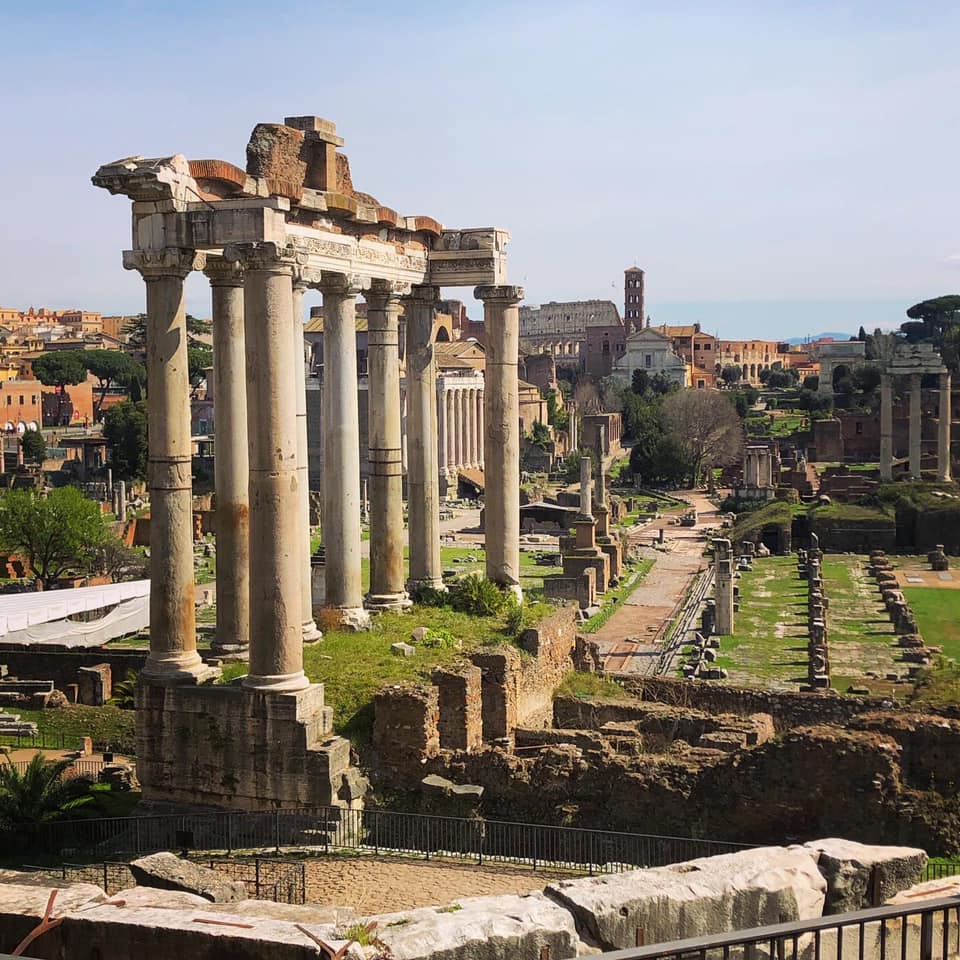
TOTAL LOCKDOWN
That night the prime minister announced a total lockdown, not just in the Red Areas of the north but throughout the country, including the islands, effective the next day, March 10. Shops, bars, restaurants would be open but the meter-distance between individuals was to be respected. All businesses would close by 6 p.m. Delivery would still be allowed. Any citizen would have to self-certify (by official downloadable form from the government’s web pages) his or her reason for being out and about.
On March 10, I woke up and went out in the warm sun. I had to pick up a prescription at my doctor’s. Patients waited outside on the sidewalk as her receptionist toggled between coming out to deliver prescriptions and answer questions and answering the phone which rang incessantly. She wore no mask but gloves – the kind they have in the fruit and veg section of the supermarket.
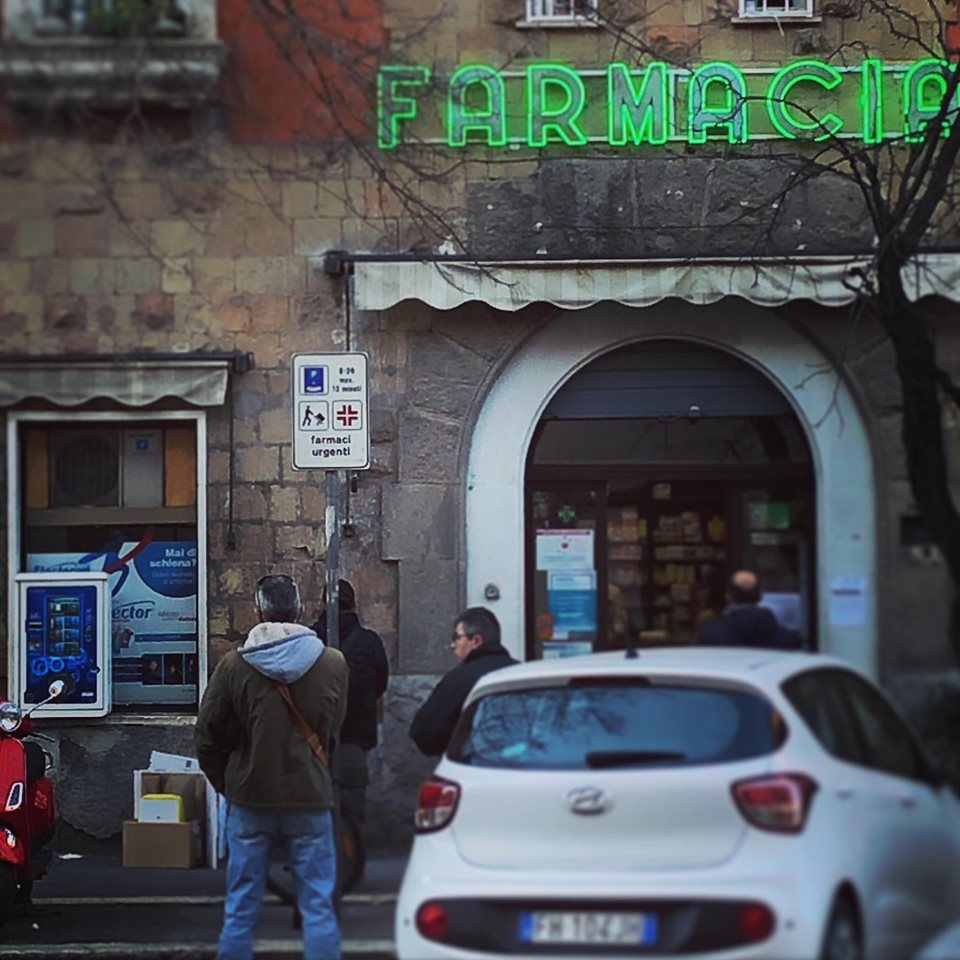
At the pharmacy, same deal. People stood at least a meter apart outside, waiting their turn to go in. From there, I went to my bar. As in any Latin coffee culture, the bar is the heart of the neighborhood. Here, where there would once be 20 tiny tables brimming with customers sitting in the sun, the meter away rule had been applied and there were a scant five or six tables and only two other customers. I was asked to wait outside until the current patrons had paid and left. While I enjoyed my coffee, juice and Danish outside in the sun, the Chief of the Carabinieri came by. I was worried about leaving the house without my self-certification; all I got was a “Buongiorno, signora.” This emboldened me to venture further. I went as far as the Campidoglio that day and took photos of the eerily deserted piazzas and streets. I ended my excursion on day one of lockdown at Eataly where I stocked up on food for the week.
Since that lockdown, a much more severe one followed on March 11. Now, only pharmacies and food stores are open. Some shops with cleaning supplies or electronics are, too, but that’s it. The self-certification is necessary at all times. Walks and outdoor exercise are allowed but only solitary, not in groups. Only one person per household is allowed to go out and do the shopping. The numbers are climbing exponentially. In the three weeks since we started talking about this, we’ve gone from 17 to 15,000 cases.
Click the image above for more images
HEARTWARMING SIDE
There is a heartwarming side to all of this. The prime minister’s conferences have been extremely effective. He has been at once human and relatable, recognizing that he knows he’s asking the impossible of an extremely sociable people whose lifelines rely on coffees and aperitivi with friends in the square, long evenings spent in crowded wine bars and small trattoria, Sunday lunches that never end at grandparents’ homes, 80,000 spectator soccer matches. He’s speaking to us as if we were his neighbors while at the same time leading and sharing with us his knowledge and that of the many experts he has helping this process along. Italians are listening, for the most part. They are respecting this new way of being. Humans adapt.
In the coming days and weeks, I’m honored to share what’s happening in my corner of Rome with you. It’s good to keep in touch with the outside world for me while it is essential that you recognize that this thing turns on its head in a split second. An old friend from The Valley shared a meme the other day about a Vermonter who’s been self-isolating his whole life. In a way, as Vermonters, we like a little alone time – probably more than your average Italian does. But choosing to be alone and having to be alone are two very different things. Take the numbers seriously.
Live from Italy Part 1 | Part 2 | Part 3 | Part 4 | Part 5 | Part 6
BIO
Tina Marisa Rocchio was born in Burlington and lived in Warren until she was 14. She went to Warren Elementary School and HUHS before going to boarding school, returning home to Vermont on school holidays. Prompted by her love of the Italian language, at 18 she went to study for a fifth year of high school to St Stephen’s School of Rome and the rest, as they say, is history. She’s been living in Italy for over 30 years where she raised her daughter, Giulia, who now lives and works in London. She has spent her adult life demystifying contemporary Italian life and politics and promoting Italian art and culture to anyone who would listen. Founder of ExperienceItalia! and former director of Arcadia University programs in Italy for nearly 15 years, she now consults with the UN’s World Food Programme, sits on the board of trustees of St Stephen’s School of Rome and finally has begun writing again about Italy.





